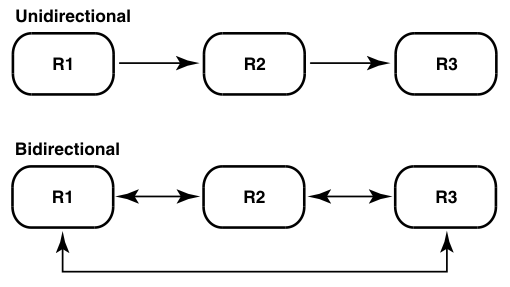Directions of exchange
Synchronization can be unidirectional or bidirectional. In most
cases, you will use bidirectional synchronization.
Unidirectional synchronization is suitable in situations like these:
- You use a replica as a backup.
- Your company supplies information to another site (or company) for read-only use.
- A high-security development project uses the same data as a more open project. In this case, the open project sends updates to the high-security project, but no updates are sent in the other direction.
Figure 1. Unidirectional and
bidirectional updating

Unidirectional updates carry some risk. For example, an accidental change of mastership cannot be fixed, and restoring from a replica that does not exchange updates directly with the broken replica involves extra work. Also, you must ensure that no work is done accidentally in a read-only replica.